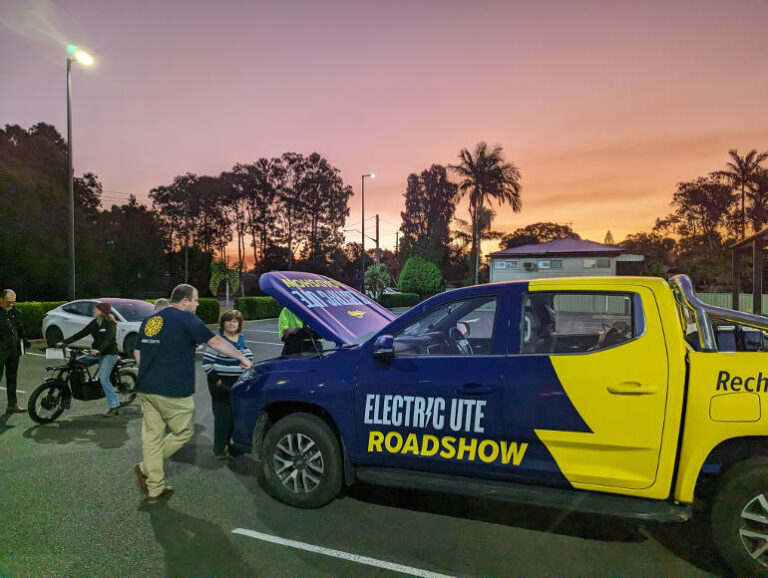After more than 10,000km on the road with an electric ute and, talking to hundreds of regional Aussies in 20+ communities across three states, Solar Citizens has a new report – Five Recommendations for Accelerating Clean Transport in Regional Australia.
The report was developed as part of the Electric Ute Roadshow which is making its final stop in Sydney on Friday August 18.
The report makes five recommendations:
- Implement a strong mandatory Fuel Efficiency Standard to unblock the supply of electric vehicles for Australians.
- Build resilient charging infrastructure to help address range anxiety.
- Prioritise regional towns for charging infrastructure to help increase regional prosperity.
- Implement solar-shaded roofs in carparks and on charging stations, to increase supply of clean energy to charge electric vehicles.
- Remove barriers to Vehicle-to-Everything (Vehicle-to-Load, Vehicle-to-Home and Vehicle-to-Grid) technology so we can run our tools, and using the batteries in our electric vehicles.
The electric ute driver, Ballarat local Ben Lever has gone from petrol-head to one of Australia’s fiercest clean transport advocates, and has had a ball travelling from Ballarat to Brisbane in one of Australia’s first electric utes.
“I’m lucky enough to have captained one of the first commercially available electric utes on a six month trip through regional Australia. “ Mr Lever said.
“I discovered that EVs are great to drive. The electric ute I’ve been driving (the LDV eT60) is incredibly smooth and quick off the line, but I’ve been even more impressed by the cost savings.”
When Ben reaches his final stop on the Roadshow in Sydney this Friday, he’ll be joined by Western Sydney “sparky” Jacob Kennedy. Mr Kennedy estimates an electric ute would save him about $250 a week in fuel costs. Plus electrifying Australia will bring many jobs to electricians like him.
The Electric Ute Roadshow has revealed the huge savings that a strong mandatory Fuel Efficiency Standard could bring:
- $11 billion Australia-wide in the first five years
- $4 billion of this in regional areas alone in the first five years
- $3.4 billion for New South Wales in the first five years






